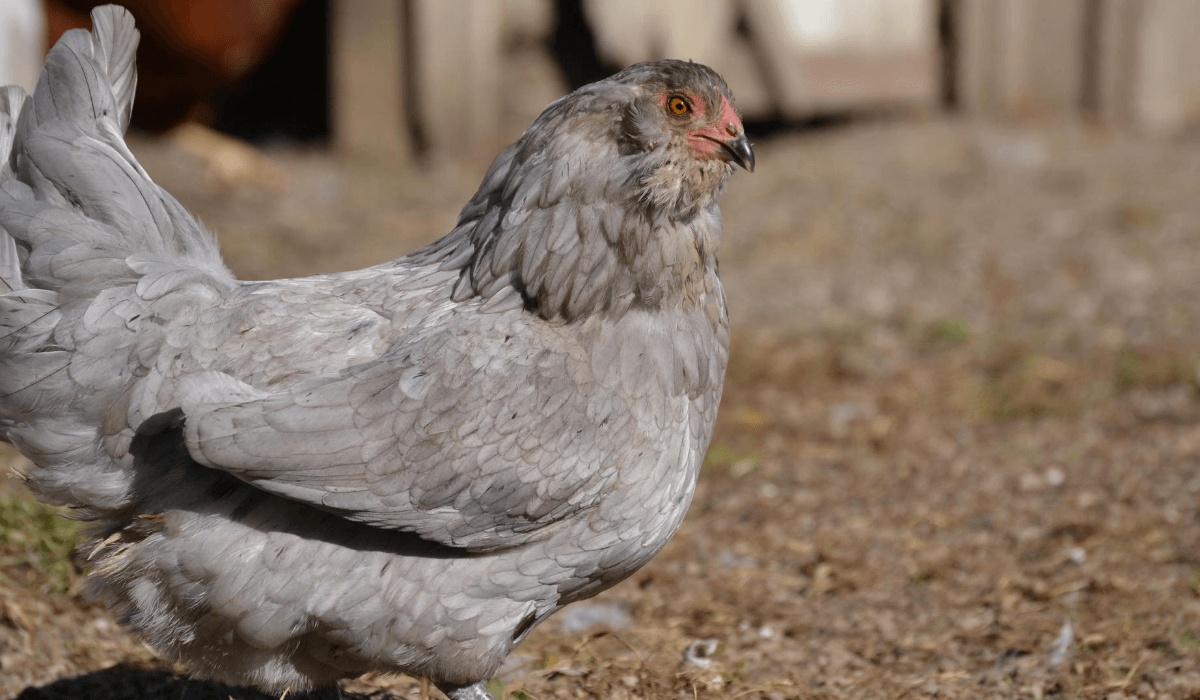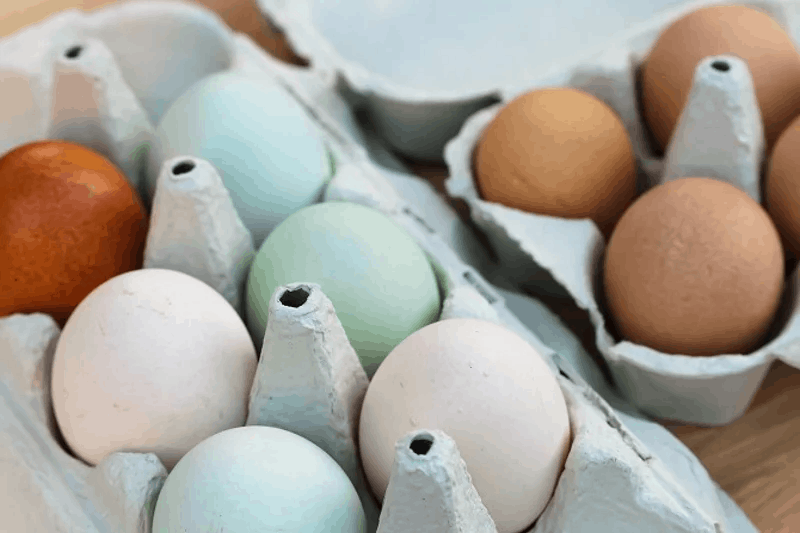Chickens, Info Guides
Ameraucana Chickens – A Guide to the Rare Chicken Breed
Ameraucana Breed Profile
The Ameraucana chicken is a unique and rare breed. They are currently growing in popularity in both Australia and the USA.
Ameraucanas are known for their light blue eggs. However, there is more to this breed than just blue egg laying.
Backyard chicken owners are falling in love with their fluffy face feathers and gentle personality.
History
In South America in the 1920s, Araucana chickens were created by cross breeding two ancient breeds – a Collonca and Quintero.
Araucana chickens have a unique appearance with ear tufts. While it makes them look very cute, this tufting gene is deadly. If two parents both contribute the tufting gene, their chicks will die before hatching.
Later in the 1920s, Araucana chicks were imported to the USA.
In the 1970s, a man named Mr Keller from the Pratt Experimental Farm in Pennsylvania created the first Ameraucana chickens. He cross bred the Araucana chicken with various other breeds.
His goal was to keep the blue egg gene while eliminating the lethal gene that creates ear tufts.
Whilst the American Poultry Association (APA) recognises Araucana and Ameraucana chickens as two separate breeds, some countries still only recognise them as the same breed.
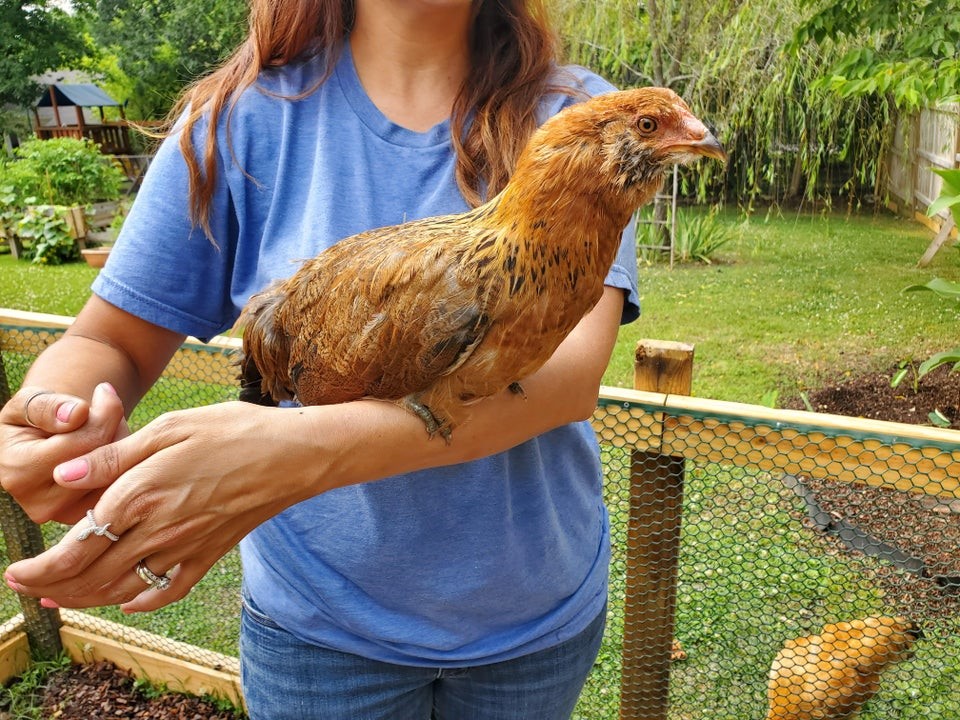
Ameraucana or Easter Egger?
Easter Eggers usually have puffy cheeks where Americana’s don’t.
What is the Difference Between an Easter Egger and Ameraucana?
Easter Eggers often get confused with Ameraucanas.
This is because many Easter Eggers look very similar to purebred Ameraucanas – they often have their distinctive beards and muffs. They also have the same blue egg color.
Ameraucanas are a pure breed whilst Easter Egger chickens are a hybrid breed.
Easter Eggers are made by mixing either an Araucana or an Ameraucana with another breed. These include mixing in the Rhode Island Red or Silver Spangled Hamburg. They will not breed true.
Easter Eggers, sometimes called ‘Easter Egg chickens’, will still possess the blue egg laying gene.
The Olive Egger is another variation. An Olive Egger is a cross between a blue egg laying breed and a brown egg laying breed. They lay green eggs that are the colour of a green olive.
Ameraucana Breed Standard
The American Poultry Association first recognised the standard Ameraucana as its own breed in 1984. This created an official breed standard on how they should look.
The American Bantam Association accepted the bantam variety a few years later. There is now also the Ameraucana Breeders Club who work to preserve the breed.
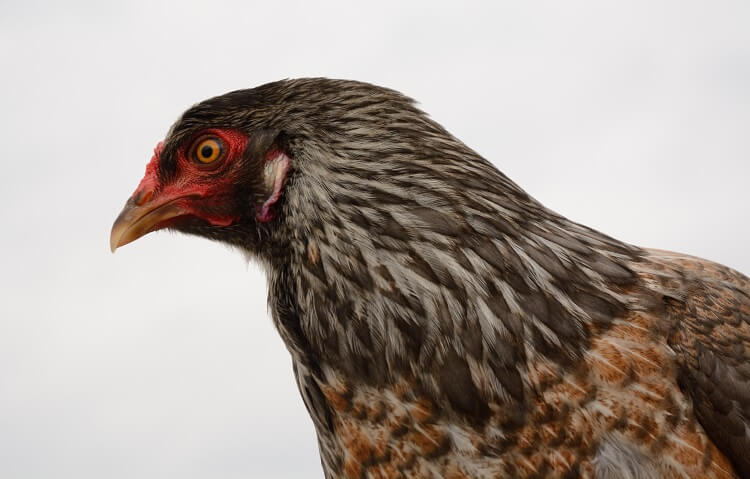
Ameraucana Chickens
Their red eyes and body shape make them look a little bit like a hawk
Appearance
The Ameraucana breed has a compact body and wide chest. Their tail stands upright.
Ameraucanas have small pea combs. A pea comb is short and close to the head. It has three bumps that look like peas, which is where the name ‘pea comb’ comes from.
- They also have very small wattles that are barely noticable.
- Both their pea comb and wattles are red.
- Their leg colour will vary depending on the colour of their feathers. They have four toes on each foot.
- Their eyes are reddish brown.
- Unlike the Araucana, the Ameraucana does not have ear tufts.
- Their red eyes and body shape make them look a little bit like a hawk.
Some people believe this prevents actual hawks from attacking them and keeps them safer than other chicken breeds.
Size
Ameraucana chickens are a light chicken breed. They come in both standard and bantam varieties.
- A standard Ameraucana hen weighs 2.5kg and a rooster 3kg.
- A bantam Ameraucana hen weighs only 700g and a rooster 800g.
The standard variety is able to be used as a table bird but too light to be ideal for meat production.
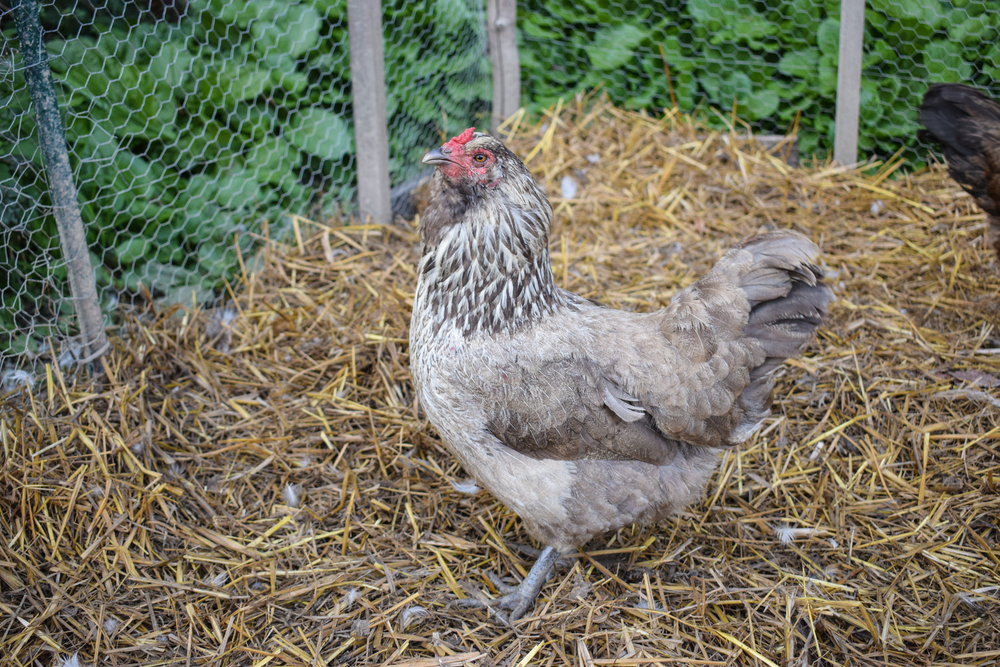
Blue Ameraucana Chickens
They have dark grey feathers with small black sections on their wings and tail
Feathers
One of the Ameraucana’s most distinctive features is their fluffy face feathers. They are one of the only breeds with both beards and muffs.
A chicken beard is feathers on the upper throat. Chicken muffs are feathers that project away from the face.
This gives them their distinctive appearance, making them look like they have cute, chubby, chipmunk cheeks.
Colours
Ameraucana chickens come in eight colours:
- Black – They have black feathers all over and black feet.
- White -Their feathers are white with some pale yellow sections. They have light coloured legs.
- Blue – The Blue Ameraucana have dark grey feathers with small, black sections on their wings and tail. Their feet are black grey or black.
- Blue Wheaten – The Blue Wheaten color has mostly white feathers. They have dark brown, wheaten colouring on their head, wings and tail. They have slate blue legs.
- Wheaten – The majority of their feathers are a light tan colour, like the colour of wheat. They have some darker brown colouring on their head, wing tips, tail tips and leg feathers. Their legs are dark blue.
- Brown Red – Their feathers are a brown red, rust colour. They have light coloured legs.
- Buff – They have yellow feathers with darker, brown features. They have light legs.
- Silver – Their feathers are light grey with some darker grey sections on their heads, wings and tail. They have dark legs.
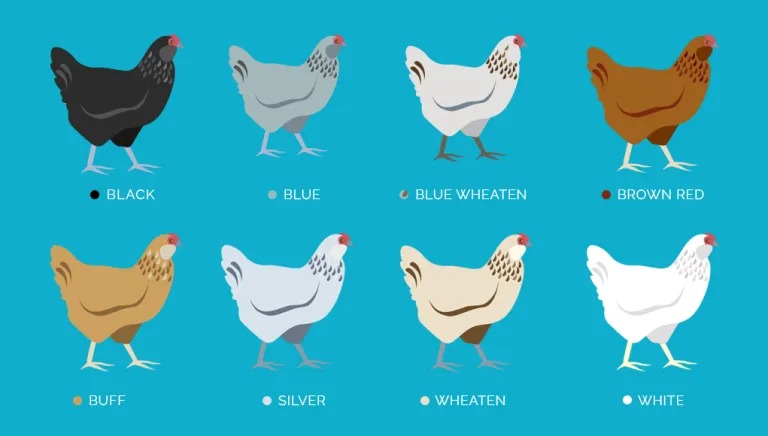
Ameraucana chickens come in eight colours
Black, white, blue, blue wheaten, wheaten, brown rd, buff and silver.
Ameraucana Chicken Eggs
Amerauacans are known for their colored eggs.
Does the Ameraucana Chicken Lay Blue Eggs?
Yes, the Ameraucana hen lays blue eggs.
In modern times, light blue eggs are very appealing to backyard chicken keepers. They are exciting and certainly something to show your friends. The fact they lay blue eggs is the main reason some people choose to own the Ameraucana breed.
However, it wasn’t always this way. Years ago, a blue egg was seen as strange and undesirable. People began promoting blue eggs as being more nutritious as a way to sell more Ameraucana chickens.
They claimed blue eggs contained higher protein and less cholesterol than brown eggs. However, this is untrue. A blue egg has the same nutritional values as any other coloured egg.
The contents inside all of them is the same. It is only the shell colour that is different! Some people online say that Ameraucanas lay green eggs but this is not true.
Egg Size
Ameraucana hens lay medium sized blue eggs.
Egg Laying
The Ameraucana has a moderate egg laying ability.
Their egg production isn’t high enough to be used by the commercial egg industry but they are favoured by backyard chicken owners.
These blue egg layers will start laying eggs later than most other breeds when they are around 6 or 7 months old.
On average, one hen will produce 3 or 4 lovely blue eggs per week. They will continue to lay like that for around 4 years.
Like all breeds, they will stop laying during the coldest winter months and when they are moulting.
Then as they get older, their egg production will begin to decrease. Eventually their blue egg laying will stop as they reach their golden years.
Ameraucana Chickens as Pets
The Ameraucana breed makes a great pet.
They are only bred to be backyard chickens. They are not used in the commercial chicken meat or egg industries.
Ameraucanas are a hardy bird and handle cold temperatures well. They don’t do as well in hot, humid environments.
On a hot day, provide your Ameraucanas with plenty of shade and constant access to cool water.
Freeze water in an old milk bottle and put this in their coop. The block of ice will cool down the area and your hens may even sit against it for some relief.
Temperament
Ameraucanas are lovely birds. They are docile and gentle. Even the roosters are approachable.
They are a quiet breed, except for their egg song. An ‘egg song’ is when a chicken makes a lot of noise after laying an egg, as her way of announcing it to all the other chickens.
They can sometimes be a bit nervous and skittish, especially if the individual chicken is not regularly handled from a young age.
Even the most socialised Ameraucana doesn’t want to be picked up and cuddled. They are friendly but are not a lap chicken.
In a mixed flock, the Ameraucana is in the middle of the pecking order. They handle being near other breeds but will usually hang around their own kind.
Mix them in with breeds that are a similar size to minimise any fighting.
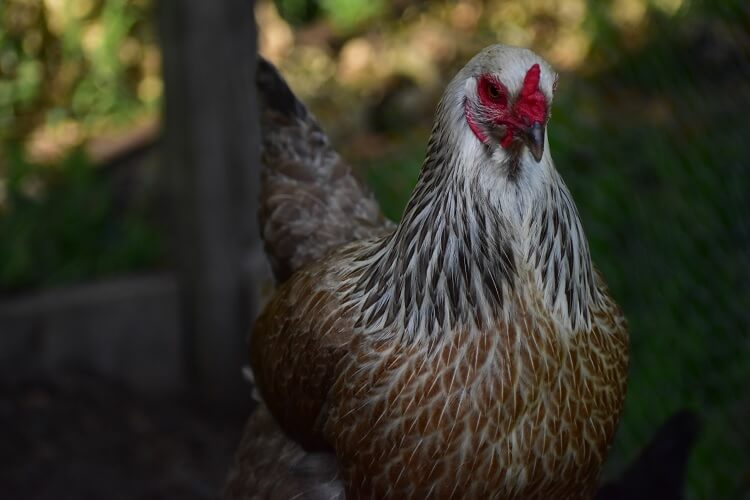
Ameraucana Temperament
Ameraucana don’t like to be picked up and cuddled but they are super friendly
Caring for your Ameraucana Chicken
Ameraucanas are a healthy breed, with no major health issues. They can live up to 8 years of age.
Provide your pet with fresh food and water daily. They are great foragers and will supplement their diet with bugs they find in your garden.
Most people will let their hens out of their coop each day to roam in their yard and peck around. Once the sun goes down, lock them back inside their coop to keep them safe from predators.
Line the floor of their coop with absorbent, disposable bedding material such as wood shavings or shredded paper.
Clean this out and replace all bedding whenever it starts to smell bad, usually once per week. Keep in mind – the more chickens you have, the more often you will need to clean it out.
Chicken Coops
Like many different breeds, Ameraucanas can handle confinement. However, they are much happier and healthier when allowed to free range.
Even if you are letting them out to free range all day, you will need to provide your flock with a chicken coop. This is a safe place they will know as their home. They can lay there, perch their overnight and come back to the coop for safety if they feel threatened.
Somerzby provides high quality chicken coops made from rot resistant timber that will last you many years. Our coops have strong wire mesh and sliding latches to ensure your hens are protected from predators.
Whilst Ameraucanas can handle cold climates, they cannot handle freezing weather. Always provide your pets with an enclosure that will keep them warm. Somerzby coops all provide a dry, draft-free perching area.
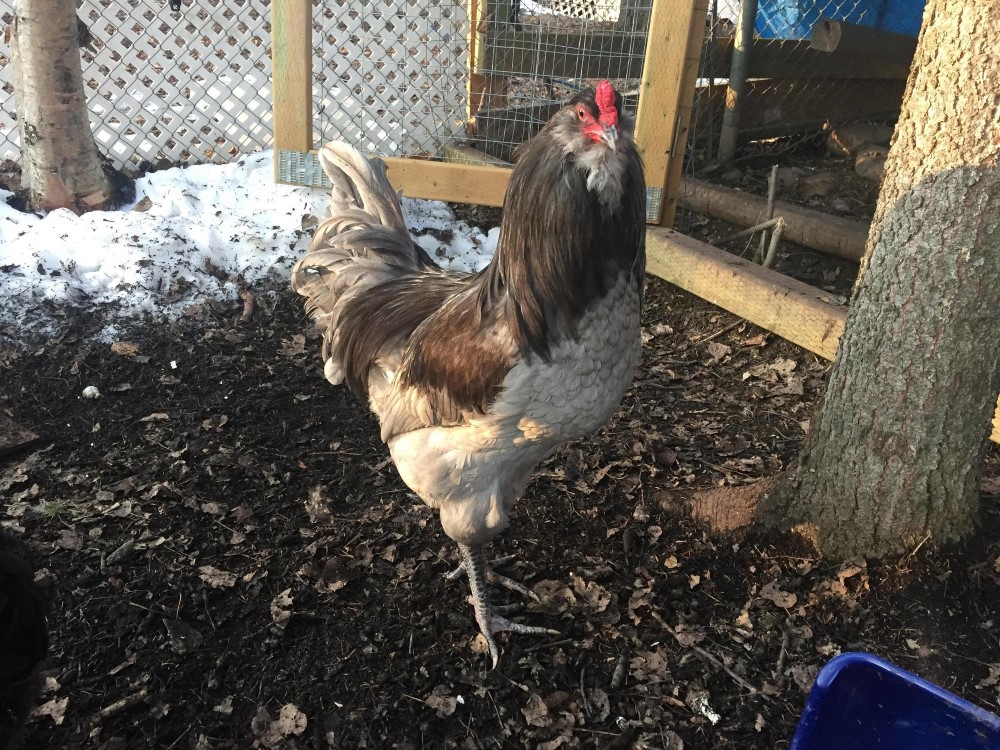
Letting them out to free range all day
Even if you are letting them out to free range all day, you will need to provide your flock with a chicken coop
Nesting Box
A nesting box is a safe place for your hens to lay eggs.
Hens are naturally to drawn to lay eggs in nesting boxes as their enclosed walls help them to feel less vulnerable and protected.
Nesting boxes benefit owners as you always know where the eggs are and they are less likely to be stepped on and broken.
If your hens don’t seem to be using their nesting boxes for egg laying, you can put plastic poultry eggs or golf balls in the nesting boxes. This helps show them where they are supposed to lay.
Choose a chicken coop with a nesting box mounted onto the side with an opening lid. This means you can easily collect their beautiful blue eggs without having to actually go inside of the coop.
There is a benefit to your Ameraucanas blue egg color. If they don’t lay in their nesting box, the blue eggs are easy to spot in the coop. It is almost like an easter egg hunt!
Breeding
Ameraucana hens are not a particular broody breed, compared to the average chicken. If you want hens who will sit on fertile eggs to hatch them for you, an Ameraucana is probably not the best breed to choose.
However, this can vary from hen to hen. Some owners have reported having broody Ameraucanas.
A broody hen will stop laying eggs, sit in the one spot (her ‘nest’) for long periods of time and become very puffed up and defensive if anyone approaches her while she is sitting.
Rooster vs Hen
Most backyard chicken owners prefer to just keep hens.
Hens are friendlier, easier to handle and provide you with fresh eggs.
Roosters can be much more difficult to keep as pets. They are prone to becoming aggressive, making them difficult to handle. They also crow and can grow sharp spurs on their feet which could injure you or your hens.
In comparison to other breeds, Ameraucana roosters are fairly docile. They are able to be approached and handled if socialised with humans from a young age.
They are most likely to become aggressive during breeding season. During this time they will become protective of females and are more likely to try attack you if you approach the hens.
Chicks
It can be difficult to tell apart hens and roosters before they reach maturity.
Some experts are able to sex baby chicks from one day old however they are not always 100% accurate. Many owners, particularly those living in suburban areas, only want hens as pets and want to avoid buying roosters.
The main way to tell male and female Ameraucana chicks apart is by their comb. A male chick’s comb will be much wider at the base, compared to the female’s. This is noticeable from a very young age.
At around 3 months old, male Ameraucanas will have longer feathers around their necks.
Male chicks may also have a bossy temperament. They will puff out their chest and try to herd up females. They may also begin trying to crow from a young age.
Buying Ameraucana Chicken
Unfortunately, the Ameraucana breed is not available in Australia. However, you can buy Araucana chickens and Easter Eggers. The Olive Egger can also be found but is rare.
Point of lay Araucanas or Easter Eggers will sell for around $30 in Australia. This price will increase if you need the chickens transported to you.
Ameraucanas are mostly found in the USA.
For our international readers – beware when purchasing Ameraucana chickens as many sellers will actually sell you hybrid Easter Eggers instead.
If a seller is trying to sell you ‘Americana’ or ‘Americauna’ chickens (spelled incorrectly) then this is a sign they may have Easter Eggers.
Ameraucanas are a rare chicken that are in high demand. This will unfortunately increase the price.
References
- www.thehappychickencoop.com/ameraucana/
- www.mannapro.com/homestead/ameraucana-chickens
- www.poultryaustralia.com.au/easter-egger-cppb




